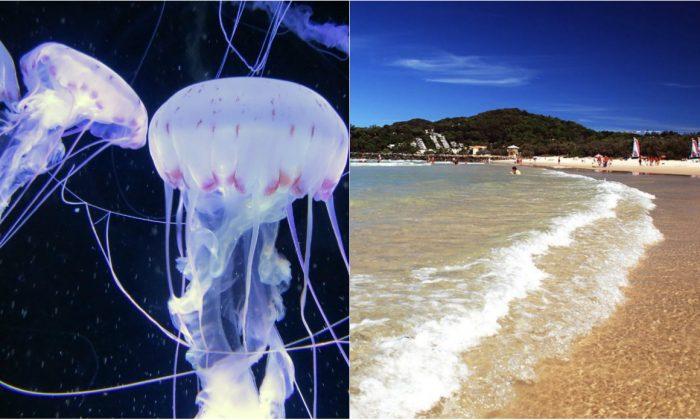A man in Queensland, Australia, has described his pain to be like ‘fire,’ after a jellyfish latched onto his body during a swimming session on Jan. 6.
Brendan Osborn was swimming at a Twin Waters beach on the Sunshine Coast when a jellyfish, believed to be of the “snotty” species, nestled its tentacles across his back and shoulders.
“It felt like my back was on fire, a burning sting across my back and shoulders, some on my face and neck too.”
Osborn then washed the gelatinous creature off his back with fresh water and soaked himself in vinegar.
After a couple of hours, the stinging had stopped but Osborn was left with elevated red marks.
In a Facebook post, Osborn said “the red marks are still all over me. They can stay for weeks apparently.”
High Number of Jellyfish Stings
Sunshine Coast beaches have seen a large number of jellyfish washing ashore, with 23 people in Queensland suffering severe stings since Jan. 1, reported the Courier Mail. Of the 23, eight had to be taken to hospital for further treatment.Between Dec. 1, 2018 and Jan. 7, 2019, more than 22,282 people sought treatment for jellyfish related injuries, compared to 6,831 in the same period last year. Several victims suffered symptoms similar to anaphylactic shock.
According to Dr. Lisa-ann Gershwim from the Australian Marine Stinger Advisory Services (AMSAS), symptoms such as anaphylactic shock may come from jellyfish stings but the reaction is limited to only a few less common species.
Some Precautions
There are some precautions AMSAS recommends for beach-goers in Queensland and enjoying an ocean swim.1. Always swim at patrolled beaches between the red and yellow flags. Life guards monitor the beaches every day for the presence of marine stingers. 2. Wear protective clothing such as a full-body lycra suit protects about 80% of the skin from stinging—and also from sunburn! 3. Talk to the lifesavers at the beach. They know when and where stings have occurred to help you make an informed decision.
https://twitter.com/lifesavingqld/status/1082057872941273088






Friends Read Free